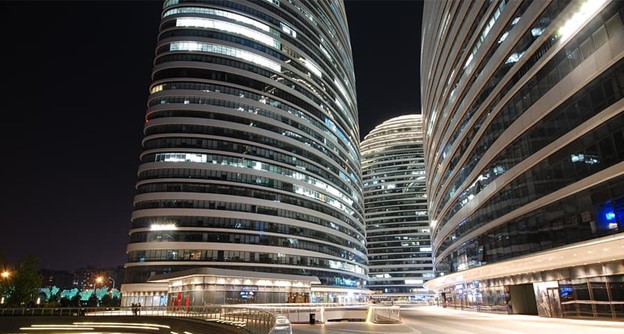When it comes to commercial facilities, the reliance on utility power is often much heavier than it would be for residential areas. From computers and servers that maintain massive loads of vital data and financial information to manufacturing equipment that generate profits for your company, keeping essential services up and running during a power failure is important. However, understanding what emergency standby power actual means to your company can be overwhelming. With so many regulations and factors to consider, professional help is always encouraged.
Below, the experts with Action Services Group provide a basic guide to understanding commercial generators and explain the differences between emergency and standby power.
Understanding the Basics of Generator Rating
When it comes to potential generators for your commercial facility, there are four basic ratings to choose from. Generator ratings define the expected amount of operational time a unit is designed to support. Ratings, regardless of brand, should be clearly defined and stamped onto the identification tag included with each model. Understanding these ratings as you design an emergency power system for your commercial facility is essential to investing in the right generator to support your needs.
Cummins generators, for example, follow the below ratings:
- Base Load (Continuous) Power (COP): COP-rated generators are used to provide power, for a constant electrical load, for an unlimited amount of time.
- Emergency Standby Power (ESP): ESP-rated generators are those that are used to provide power to a varied electrical load during a normal utility outage.
- Limited-Time Running Power (LTP): LTP-rated generators are those that provide power, for a constant electrical load, for a limited time span.
- Prime Power (PRP): PRP-rated generators provide power for varying electrical loads for an unlimited amount of time.
While emergency and standby power is often used interchangeable, they actually refer to two separate types of power supplies. Which generator is right for you depends largely on your building’s usage. For example, an industrial building is classified differently than a housing complex, which affects whether you need emergency power or standby power.
The National Fire Protection Association (NFPA) established the NFPA 110. Known as the Standard for Emergency and Standby Power Systems, this document defines which classification is applicable to your building, as well as the devices for which backup power are legally required.
While we will explain the nuances of these power supplies below, let us get back to the generator ratings. The majority of all industrial buildings are connected to a utility power grid. Based on historical data, experts are able to factor this in as a “normal utility outage” when designing an emergency power system. In most cases, an ESP-rated generator is recommended. (Most utility power grids are robust, with immediate response teams at the ready when a power outage occurs. This helps to limit the duration of an unexpected outage.)
Certain communities may be more remote and do not operate off a power grid. In fact, some locations may rely on a PRP- or COP-rated generator as their primary source of power. In these cases, an ESP-rated generator may then be used as a back up to ensure continued power while your primary source of power is restored.
After reading the first part of this article you may have some questions on UPS systems. You may have been confusing uninterrupted power supplies with emergence power. These are actually two completely different power systems, and we offer a full explanation in; Uninterruptible Power Supply for Commercial Buildings.
Emergency Power & Redundancy
The NFPA 110 classifies both emergency and standby power systems as Emergency Power Supply Systems (EPSS). However, based on their usage, they are divided into two different levels.
Emergency power is considered a Level 2 requirement. Per the NFPA 110, Paragraph 4.4.2, “Level 2 systems shall be installed where failure of the EPSS to perform is less critical to human life.” What this essentially means is that any building that requires minimal amounts of power during a standard utility outage likely requires a Level 2 emergency power system.
Every municipality has its own required emergency measures that buildings must meet with to be in compliance with local codes. As such, it is important to work closely with building inspectors to ensure complete compliance. However, it can typically be assumed that buildings that require emergency lighting, as well as fire alarms and sprinkler systems, will require emergency power. Additionally, in accordance with the NFPA 110, emergency power systems must provide energy to connected devices within 10 seconds of an outage.
Buildings that use emergency power supplies often require minimal power to keep specific equipment operable. The equipment, however, is considered vital to human safety in the case of a power failure. A Level 2 emergency power system, in the very least, typically requires:
- ESP Rated Generator: These generators, which are typically fueled by diesel or natural gas, can be located inside or outside of a commercial facility.
- Automatic Transfer Switch (ATS): An ATS detects when a power failure occurs and automatically switches devices to the emergency power supply system. When power is restored, it detects this and switches devices back to the utility-supplied power.
- Distribution Panel: This panel should include switching and circuit protection features. Because an emergency power supply must be connected to it’s own circuit, this panel acts as the relay that activates the power supply network when an outage is detected.
For real world applications, consider a commercial facility that manufactures lawn mower tires. While this industrial complex may have hundreds of automated machines that ensure these tires are manufactured to exact specifications, their building plan states that all of this equipment is to be shut down in the case of a utility power outage. However, emergency egress lighting, exit signs, fire alarm systems and sprinkler pumps must remain operable to ensure safe exit from the facility. To support this, a Level 2 emergency power supply system is required.
Emergency Standby Power & Other Components
Emergency standby power is different. Considered a Level 1 EPSS, standby power is defined by the NFPA 110, paragraph 4.4.1 as systems that “shall be installed where failure of the equipment to perform could result in loss of human life.”
Level 1 systems tend to be more advanced and, therefore, more complex. Hospitals, airport control towers and power plants are prime examples of commercial facilities that require Level 1 standby power supplies.
Level 1 standby power supplies are required to have connected devices up and running within 60 seconds of a utility power outage. However, in certain circumstances, this may not be fast enough. Because of this, other components may be used to support a Level 1 standby system. Because instantaneous and uninterrupted power is often required for critical systems, a Level 1 standby system may include:
- Uninterruptible Power Supply (UPS): A commercial UPS device provides immediate and continuous power during an outage. Used as bridge between the utility power failure and the emergency standby power supply, these units run for small bursts of time but ensure linked devices remain active while awaiting backup power.
- Master Paralleling Control Panel: Every generator has its own control panel. Paralleling control panels link multiple, separate control panels together to ensure synchrony amongst each generator. This includes generators that may have redundant start and stop functions, ensuring efficiency amongst your standby power supplies.
- Distribution & Control Panels: Panels can include features like ATS or manual switches, as well as circuit protect and alarm monitoring. The size and required equipment, which is determined by the needs of each commercial facility, may affect which features are best for you.
Remote communities often offer the best examples of these systems. A local power company for a remote community provides power to residents via a series of diesel generators. To ensure power outages are minimal, multiple primary generators are used in parallel with redundant backup generators. Occasionally, peak hours may result in a power failure as the primary generators burn through their fuel more quickly. When this occurs, a UPS bridges the gap between the primary generator failure and the initiation of the backup generators. When the primary generators are refueled and, in parallel, resume providing power to the community, the backup generators are automatically powered off.
Action Services Group and Emergency Power for a Commercial Facility
Emergency power for commercial facilities can be as complex as the business itself. Determining whether you need Level 1, Level 2 or a combination of both types of emergency standby power can be overwhelming. Working with a reputable and experienced electrician can ensure your emergency power supply meets both your needs and the legal requirements of your community.
Contact Action Services Group today to learn more about which emergency power system, as well as which support equipment, is best for your commercial facility. Call 610-558-9773, email [email protected] or schedule a call.








































0 Comments